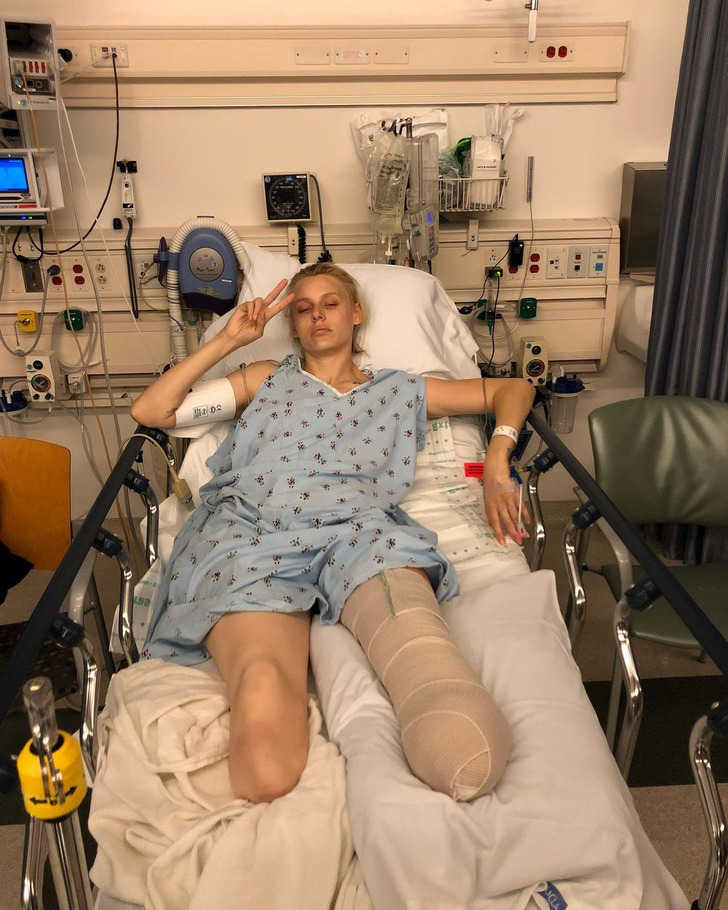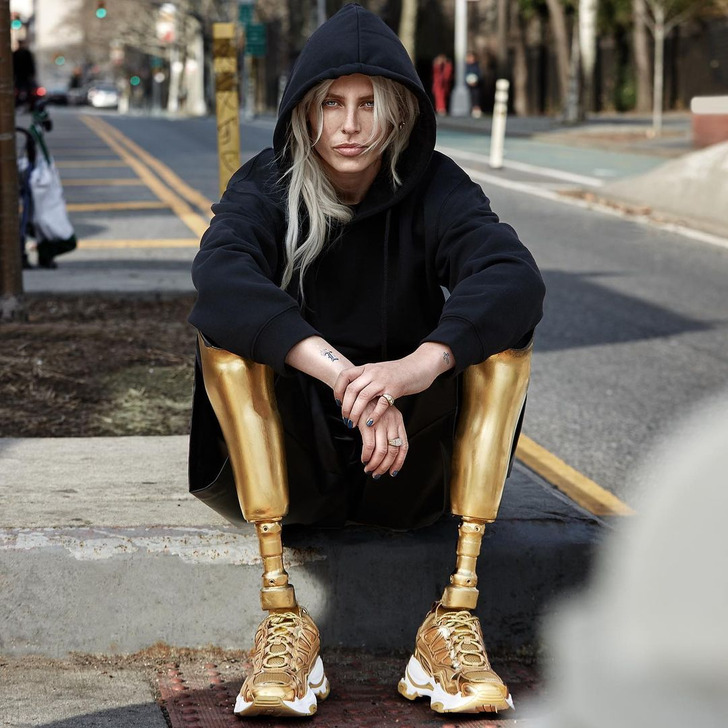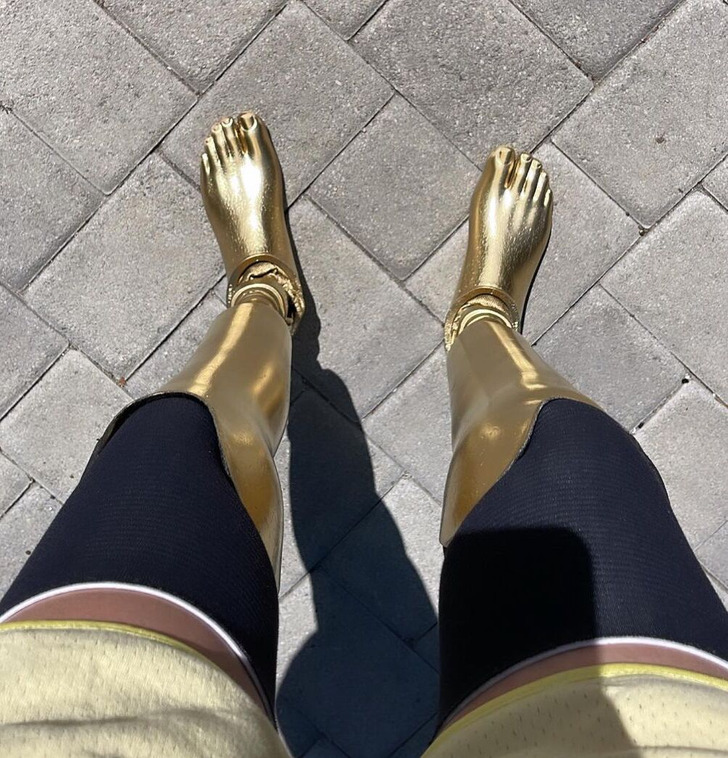Lauren Wasser is a model and activist who has overcome incredible odds to become a prominent figure in the fashion industry. In 2012, Wasser lost both legs due to toxic shock syndrome (TSS) caused by a tampon. Despite this devastating setback, Wasser refused to let it define her. She has since become a vocal advocate for women’s health and safety, using her platform to raise awareness about the dangers of TSS and the need for better menstrual product regulation.
Lauren Wasser grew up in a family of models.

Lauren Wasser was born into the fashion industry in California on March 2, 1988. Her parents were both professional models, and she first appeared in Vogue alongside her mom when she was just 4 months old. Unsurprisingly, the young girl would be drawn to this career path.

She lived a full and active life until she became ill.

Lauren Wasser was a talented basketball player who even received a prestigious athletic scholarship. However, she decided to pursue her modeling career instead. Even so, she maintained an active lifestyle for several years.
Her world was turned upside down at the young age of 24.

AtThe Diary of a CEOpodcast, Lauren Wasser, age 35, shockingly revealed her harrowing experience by saying, “I lost both of my legs because of a tampon.”
The syndrome results from an overgrowth of Staphylococcus aureus bacteria in the body, which can produce a deadly toxin in the bloodstream. TSS first caught public attention in the United States in the late 1970s when several young women became gravely ill. By the 1980s, the syndrome was infecting people at a rate of approximately 6 in 100,000.

It all started with flu-like symptoms, followed by renal failure and, ultimately, two heart attacks, all due to the rare and life-threatening syndrome. With a slim chance of surviving, doctors had to put Wasser into a medically-induced coma to save her life.

After regaining consciousness a week and a half later, Lauren Wasser shared in a poignant interview, “I woke up a week and a half later and had no idea what had even happened. They pumped me full of 80 pounds of fluid.” Tragically, her situation worsened as gangrene spread, causing her right leg and left foot to be engulfed in searing pain. “From there, my feet were on fire, and gangrene set into my right leg and my left foot. There was no option. I had to amputate my right leg.” Then, in 2018, she faced another heartbreaking setback as her left leg had to be amputated.

Lauren Wasser advocates for TSS awareness and safer menstrual products.

As she spoke out about the dangers of TSS, Lauren Wasser emphasized the harmful constituents of tampons, stating, “[They] are made using chlorine bleach, dioxin, and synthetic fibers, which create the perfect storm in our bodies.”
“I have been working with a mother who lost her teenage daughter to TSS when she was 18 — Madeline Mosby. Through the darkness and trauma of that, we have joined forces in wanting to change the world.”
She returned to modeling and became the “girl with the golden legs.”

“My whole job has been to show that you are enough, and you’re beautiful in the skin you’re in and highlighting your scars and the things that you hate most.” With this resolution in mind, Lauren Wasser decided to return to the modeling industry and started looking for gigs again. While many of her colleagues supported her decision to return to modeling, some doubted whether she could make a successful comeback.

Wasser decided to choose gold-toned prosthetics instead of prosthetics that matched her skin color after entirely accepting her new condition. “Making it my own and giving it life, so to speak, changed my perception,” she said, explaining her choice in an interview. Thus, she became the “girl with the golden legs” and started walking for famous designers again.
Currently, she’s still taking the fashion world by storm and fighting for more inclusivity.
Following the amputation of her left leg due to chronic pain, the model is now able to lead a more active lifestyle. She has resumed playing basketball, which is her passion and is even preparing for a marathon shortly. Additionally, Wasser’s modeling career is flourishing as she walked for Gabriela Hearst and Louis Vuitton in 2022 and was featured in Lacoste, Furla, and Shiseido campaigns.

In addition to her thriving modeling career, Wasser remains dedicated to advocating for inclusivity and acceptance of individuals with disabilities and diverse conditions within the fashion industry. Her activism and contributions to the fashion world have earned her a spot on Harper’s Bazaar’s special-edition Women of the Year 2022 covers, alongside other inspiring women.” I’ve worked so hard to be myself and never take ‘no’ for an answer,” is how Lauren Wasser sums up her success.
Lauren Wasser’s incredible journey from tragedy to triumph is just the beginning of a new era in modeling. Stay tuned to learn about 16 more unusual models who are revolutionizing the beauty industry.
Preview photo credit theimpossiblemuse / Instagram, theimpossiblemuse / Instagram
You Won’t Believe What Your Kitchen’s Pull-Out Cutting Board Was Actually Intended For!

The Evolution of Cutting Boards
If you’re like most homeowners, you probably have a cutting board in your kitchen. This essential tool has been used for centuries, originally designed for breadmaking. Pull-out cutting boards provided a clean, stable surface for bakers to knead dough, let it rise, and prepare it for the oven.
Modern Uses of Cutting Boards
Today, cutting boards serve many purposes beyond breadmaking. They are indispensable for chopping, slicing, and dicing meats, vegetables, and fruits. Made from various materials like plastic, bamboo, and wood, cutting boards are crucial in any kitchen. However, wood cutting boards, especially those made from maple, are considered the best for several reasons.
The Benefits of Maple Cutting Boards
Maple is a hard, durable wood that withstands frequent use and knife cuts. It resists bacteria growth better than plastic or bamboo, which can develop grooves and scratches that harbor bacteria. Maple cutting boards are also easier to maintain.Maintaining Your Cutting Board
Proper cleaning is vital for your cutting board’s longevity. After each use, scrub it with a mixture of baking soda or kosher salt and lemon to remove stains and odors. Rinse thoroughly with hot water and dry with a clean towel. Applying a food-grade cutting board oil keeps the wood from drying out and prevents crackin
Cutting Boards: A Kitchen Essential
Despite their evolution, cutting boards remain essential for home cooks and professional chefs. With proper care and maintenance, a quality cutting board can last for years, providing a clean, safe surface for food preparation.
Explore Breadmaking at Home
If you’re interested in breadmaking, try making your own bread at home. The rise of home baking during the pandemic has led many to discover the joy of homemade bread. Numerous recipes and tutorials are available online, including on the popular YouTube channel “Becca Beach.”
Discover Becca Beach’s Breadmaking Tips
Becca Beach, a passionate home cook and baker, shares her recipes and cooking tips with her followers. In her video “Homemade Bread – SUPER Easy and Delicious!” she demonstrates how to make a simple loaf at home.
The Benefits of Homemade Bread
Making your own bread is fun and rewarding, and it’s healthier and more economical than buying store-bought bread. You can control the ingredients, ensuring your bread is free from preservatives and additives.
Cutting Boards and Culinary Adventures
Cutting boards have evolved from their original breadmaking purpose to become kitchen essentials made from various materials for multiple uses. Proper cleaning and maintenance ensure their longevity and safety. If you’re looking for a new culinary adventure, try making your own bread at home. With online tutorials and a quality cutting board, you can become a breadmaking expert in no time!



Leave a Reply